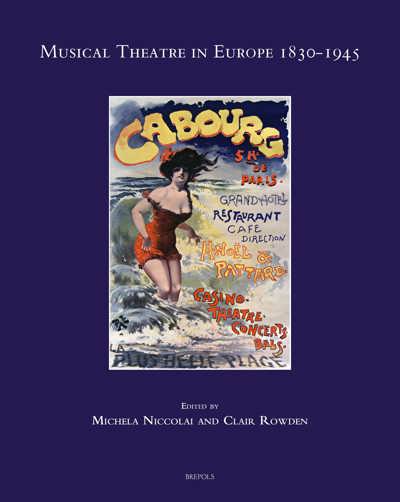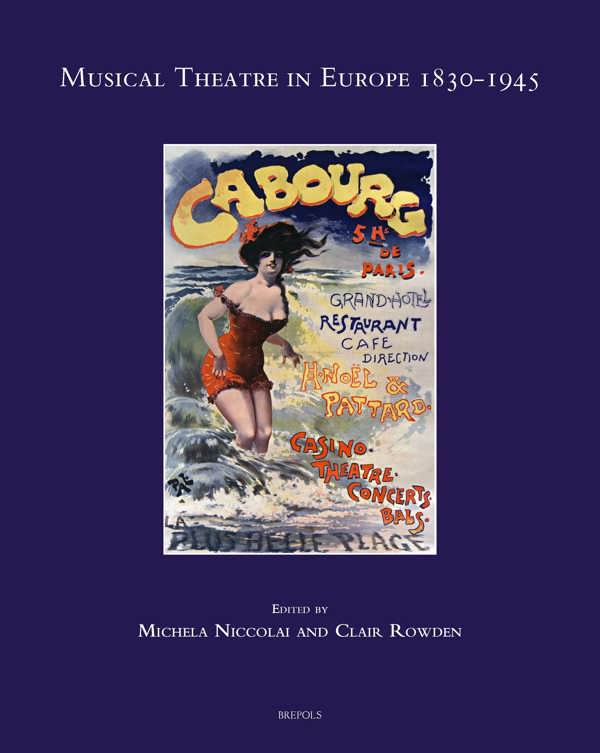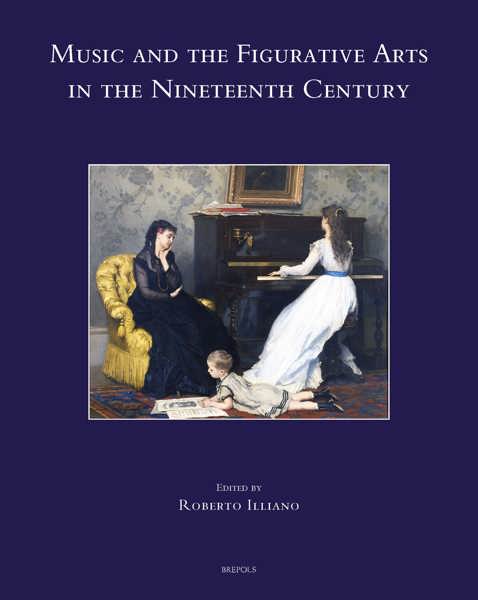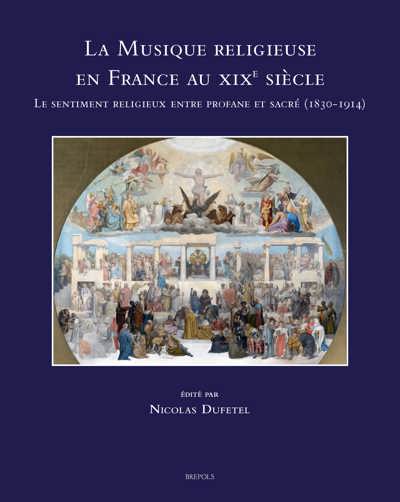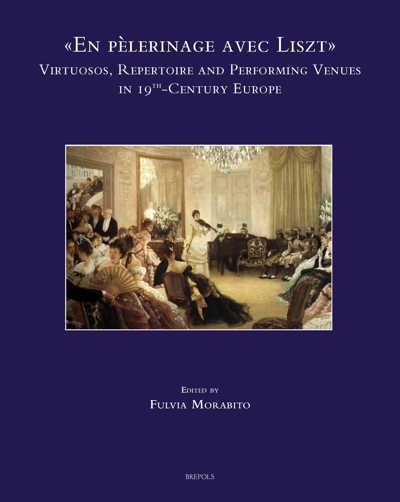
Musical Theatre in Europe 1830-1945
Michela NiccolaI, Clair Rowden (eds)
- Pages: 479 p.
- Size:220 x 280 mm
- Illustrations:30 b/w, 15 tables b/w.
- Language(s):English, French, Italian
- Publication Year:2017
- € 120,00 EXCL. VAT RETAIL PRICE
- ISBN: 978-2-503-57766-1
- Hardback
- Available
This volume offers a panoramic vision of the diverse genres of musical theatre 1830-1945
“Indeed, the volume itself is “criticism in action.” It invites its reader—specialist and non-specialist alike—to take part in the rich tapestry of signs, songs, and meanings that is European musical theater.” (Jennifer Walker, in EuropeNow, 19, 2 July 2018)
“(…) a valuable contribution to the field, both for shedding light on lost or underrepresented artists, genres, and venues, and more broadly, for calling attention to popular musical theatre practices so vital to our understanding of European musical-theatrical culture of the period.” (Sarah Gutsche-Miller, in Music & Letters, c.3, 2019, p. 567)
Michela Niccolai has published the volumes «La Dramaturgie de Gustave Charpentier» (Brepols, 2011), a revised version of her Ph.D. thesis (Saint-Étienne/Pavia, 2008), and more recently «Giacomo Puccini et Albert Carré: "Madame Butterfly" à Paris» (Brepols, 2012). At the University of Montréal (OICRM) she completed a post-doctorate project on the editing of Charpentier’s various musical and social writings.
Clair Rowden is Reader and Deputy Head of School in the School of Music, Cardiff University. Her research deals mainly with opera and nineteenth-century France; her book Republican Morality and Catholic Tradition at the Opera: Massenet’s Hérodiade and Thaïs was published in 2004, and the edited volume Performing Salome, Revealing Stories for Ashgate Interdisciplinary Studies in Opera appeared in 2013.
From the mid-1800s in Europe there was a vigorous and enthusiastic expansion of diverse forms of musical theatre. An explosion of different types of venues – the cabarets, music-halls and private theatres – rubbed shoulders with the subsidised and official theatres offering more established types of spectacle, creating a milieu which welcomed a number of new musical and theatrical genres which fed from and into one another. In the midst of this creative dynamism, alongside revues and café-concert spectacles, operetta and its derivative forms took centre stage. This volume offers a panoramic vision of the diverse genres and types of musical theatre which multiplied and blossomed during this period, and is divided into six sections: the revue de fin d’année as a theatrical genre which also influenced all other lighter genres in France during its heyday; dance music in Offenbach’s operettas and his musical recreation of the Parisian soundscape; transformation of the opera repertoire in operetta and revue parodies; Viennese operetta and English operetta and musical comedy from the end of the ‘reign’ of Gilbert and Sullivan until the outbreak of World War II; diverse theatrical practices from Parisian puppet theatre and the posters of musical spectacles in the caf’ conc’, to contemporary Italian operetta before the rise of Fascism, and its dissemination, via the impresario Vittorio Rosi, in Japan. The last section is dedicated to national case studies (Portugal, Ex-Yugoslavia and Spain) of political appropriation, demonstrating ways in which operetta may be studied as a mirror of contemporary society. Offering broad historical chapters juxtaposed with specific case studies, this volume proposes a reading of the diverse genres of ‘musical theatre’ to highlight its energy and modernity.
Michela Niccolai – Clair Rowden Introduction
The revue de fin d’année
Olivier Bara La revue de fin d’année à Paris au xixe siècle: chambre d’écho de la culture musicale
Richard Sherr Comets, Calembours, Chorus Girls. The Music of the revue de fin d’année for the Year 1858 at the Théâtre des Variétés: A Preliminary Evaluation
Alessandro Maras La revue de fin d’année, entre divertissement et avant-garde: le cas Apollinaire
Offenbach dans tous ses états
Jacek Blaszkiewicz Street Cries on the Operetta Stage: Offenbach’s Mesdames de la Halle (1858)
Stephanie Schroedter Dance in Jacques Offenbach’s Musical Theatre: Between Imagination, Improvisation and Choreography
Transformation: Parodies of the Opera Repertoire
Clair Rowden ‘Du grand au petit’: Faust on Parisian stages in 1869
José Ignacio Suárez García Parodias españolas sobre Lohengrin
Viennese and English Operetta
Marion Linhardt Was man in Wien sucht… Sitze und Logen für die Operettentheater. Annäherungen an die Räume der Wiener Operette
Christopher M. Scheer A Statutory Creation? The Grand Duke and Intertextuality in the Performance of the Savoy Operas
William A. Everett A Greek Slave (1898) at Daly’s Theatre: Performing Antiquity, Gender and Class in Late Victorian Musical Comedy
John Snelson The Waltzing Years: British Operetta 1907-1939
Theatrical and Musical Practices
Catrina Flint de Médicis Little Wooden Actors and Symbolism at the Petit-Théâtre de la Marionnette
Sylvain Samson De l’affiche à l’artiste: figures, répertoire et performances musicales dans le Music-hall. Une lecture du fonds de l’ART
Giovanni Recupido Un signore senza pace di Dino Rulli (1925): un esempio della ricezione del jazz nell’operetta italiana degli anni Venti
Michela Niccolai Portraits de femmes exotiques dans le café-chantant et dans l’opérette italiens (1910-1940 environ)
National and Political Appropriations of Operetta
Naomi Matsumoto Giovanni Vittorio Rosi’s Musical Theatre: Opera, Operetta, and the Westernisation of Modern Japan
Maria José Artiaga Deconstructing the National. The Operetta Maria da Fonte
Lada Durakovi! L’operetta e la società socialista: l’esperienza del Teatro popolare di Pola (1949-1957)
Mario Lerena Exoticism and Censorship in Post-War Spain: Luna de miel en el Cairo (1943), Operetta by ‘Maestro’ Alonso and José Muñoz Román
Abstracts
Biographies
Index of Names
